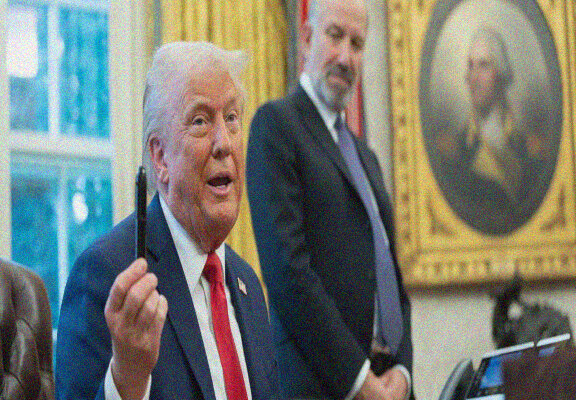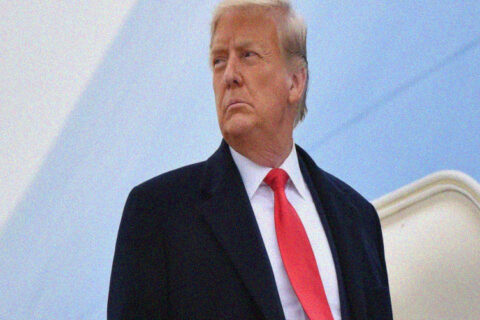Yesterday, among all the buzz related to Canada and Mexico tariffs, Trump began the process of establishing an American Sovereign Wealth Fund (SWF). The move was almost unnoticed. In fact, it seems somewhat crazy that the United States did not already have an SWF – but decades of financial mismanagement by the U.S. government played a role. The other reason the United States did not have an SWF is because of the Federal Reserve Bank. The creation of a SWF effectively returns financial power to the American Republic. The following explains what it is and why it pulls power away from the Fed.
Sovereign Wealth Funds are essentially government investment programs – a nest egg of sorts. Every single American state has some sort of publicly funded fund, usually to cover pension programs. Globally, some of the best managed countries (financially) have a SWF, including China, Saudi Arabia, Australia, and Norway – among others. The largest SWF is Norway’s, with $1.7 trillion in assets, the proceeds of which are serving the needs of 5.5 million Norwegian citizens. It should be noted that many poorer countries also have SWFs, often as a means to enrich kleptocrats.
Without getting into the nitty gritty, an American SWF would likely mirror a 401K type investment program. It would hold a mixed allotment of various commodities, stocks, and bonds, which should appreciate year over year through compound interest and earnings. Generally, SWF’s usually only rise – albeit often slowly – because they invest in safer assets, like bonds and commodities (oil, gas, gold, etc.). Stocks are often either a blue-chip variety or a corporate pursuit aligned with a national interest. The managers of the SWF are held accountable based on the performance of the SWF, which generally leads them to avoid personal passions or silly sociopolitical pursuits.
How this is structured would have to ensure that such funding is not robbed by a future leftist president who only invests in DEI, LGBTQ nonsense, or failing green energy schemes. It also needs to be defended from being used as a money pot to increase spending arbitrarily. That can be done, but Trump will need to recruit people who think like leftwing activists to help insulate future abuse of the SWF by another activist presidency. When I did my MBA Capstone project on International Finance, restructured SWFs and fiscal sovereignty for the Republic of Ireland were my two key points back when Ireland was climbing out of a massive post-bank collapse indebted status. The Irish government has since turned one SWF into a social justice piggy bank (something I feared and warned against almost 15 years ago). Thus, Trump will need to really dot every “i” and cross every “t” to ensure that does not happen in the United States. But it can be done.
Now, how does this undermine the Fed? It immediately eliminates the Fed’s monopoly on debt management. In essence, it crushes the Fed by acting as a counterweight to its debt/loan/repayment structure.
For those unaware, the Federal Reserve is the largest holder of U.S. debt in the world. In effect, an unelected American quasi-government agency holds about one-third of our massive debt. The Fed literally makes money on American spending, by charging interest back to the American people. The reason politicians ignore the debt is that they know it is a ponzi scheme. The more we spend, the higher the Fed can raise rates, the more it makes, the more it can re-loan… cycle, repeat. It is a shylock’s dream (look up what a shylock is, and you will quickly see the main culprits).
If the United States has an SWF that is structured to meet some of its budgetary needs (as with Norway), the United States will not need to turn to the Fed as its default move. The money can be withdrawn from the proceeds off earnings, which cuts the Fed out of its loan shark game – or at least diminishes it. By establishing an alternative pot of money, Trump is weakening the Fed almost overnight. In business, such redirected investments protect against hard times and mitigate predatory banking maneuvers. An SWF – if it is built correctly – can do that for the American people.
It is a smart move by the Trump team – if they can pull it off and insulate it from wild leftist pursuits. The latter is easier said than done. One option is to study the investment strategies of Jimmy Patronis, former CFO of Florida, who led Florida to multi-billion year-over-year surpluses without an income tax while crushing BlackRock. Other funds that should be studied are out of the UAE and, of course the most successful of them all, Norway. This can be a huge win for Americans – if the Fed doesn’t kill the idea in its infancy, or the leader who proposed the idea.
The son of a recent Irish immigrant and another with roots to Virginia since 1670. I love both my Irish and Southern Nations with a passion. Florida will always be my country. Dissident support here: Padraig Martin is Dixie on the Rocks (buymeacoffee.com)






Obviously it is in the best interest of the Fed to abort the initiative early on. You have stated a couple of options the Fed might use to bring that about; one is obvious and relatively less labor intensive but messy. I am sure your readers would appreciate an elaboration of what business and /or lawfare strategies the Fed might use to insure their continued control.
Future reparations fund.
What happened to my comment? It was exactly the kind of thing Mr. Martin was talking about. Censoring speech here, too?
I’m guessing it was just awaiting moderation. If it’s the one above this one then it’s visible, I’m able to see it
This is a very good idea. However, I don’t think the U.S. government has the discipline to make it work. Even if Trump manages to get the country somewhat on track, the public will eventually go to sleep again and the Political Class/Left/Special interests would pillage such a fund, regardless of the safeguards adopted. Consider, for example, what has been done to the Social Security fund. Consider all the safeguards that were put in place to restrict the size and scope of the Federal government. Those safeguards were pretty much gone or ignored by the end of Lincoln’s presidency. The changes were nearly always promoted in the name of “reform” and “democracy.”
so, we’re going to have a national crypto reserve ? isn’t that what don jr or eric said ? djt already has his coin and melania as well ?
what this tells me is it’s time to buy bitcoin. don jr and eric have already. then the us grubmint piles in and sends it to a million per coin. nice 10+ bagger for the sons. paid for by you and me.
makes hunter look like he was playing marbles, no ?
PLEASE tell me where i got it wrong
I’m of the belief that it’s best to avoid crypto as a whole if you’re considering getting into it. The crypto from the Trump family is a scam designed to take money from their most loyal supporters. The crypto scene is rife with other scams like NFTs and other meme coins. I suggest treating all crypto as a scam until proven otherwise. I’m far from a crypto expert but the scene constantly has pump-n-dumps, rugpulls, and the like on a pretty frequent basis, so unless you were lucky enough to buy into Bitcoin in it’s early days then it’s best to steer clear of it in my opinion. Previously I’ve seen crypto compared to gambling. The black pastor that prayed over the inauguration (I don’t remember his name) is also running his own scam meme coin. I hope I didn’t misinterpret your comment either, correct me if I did.